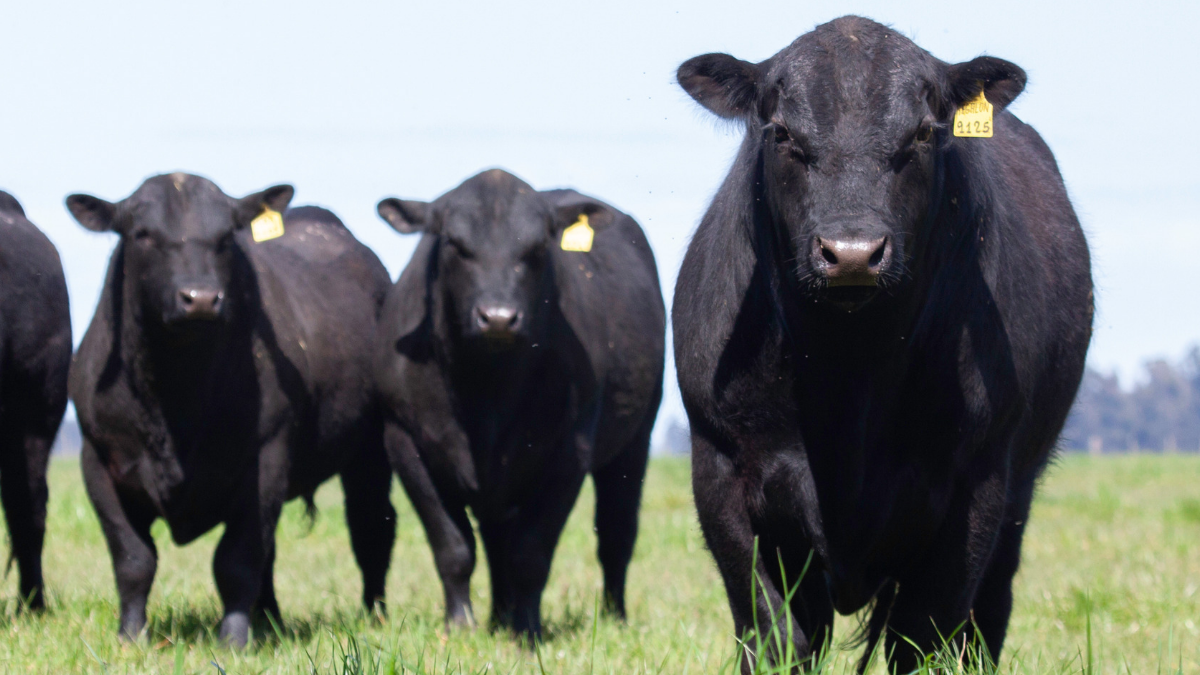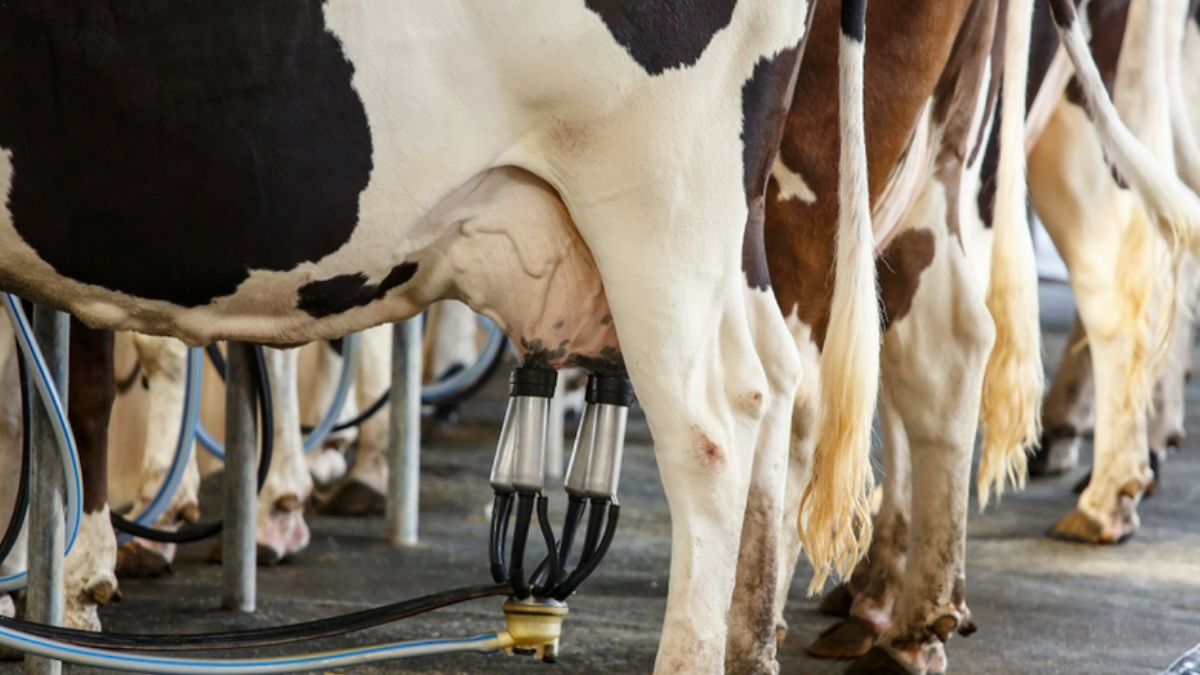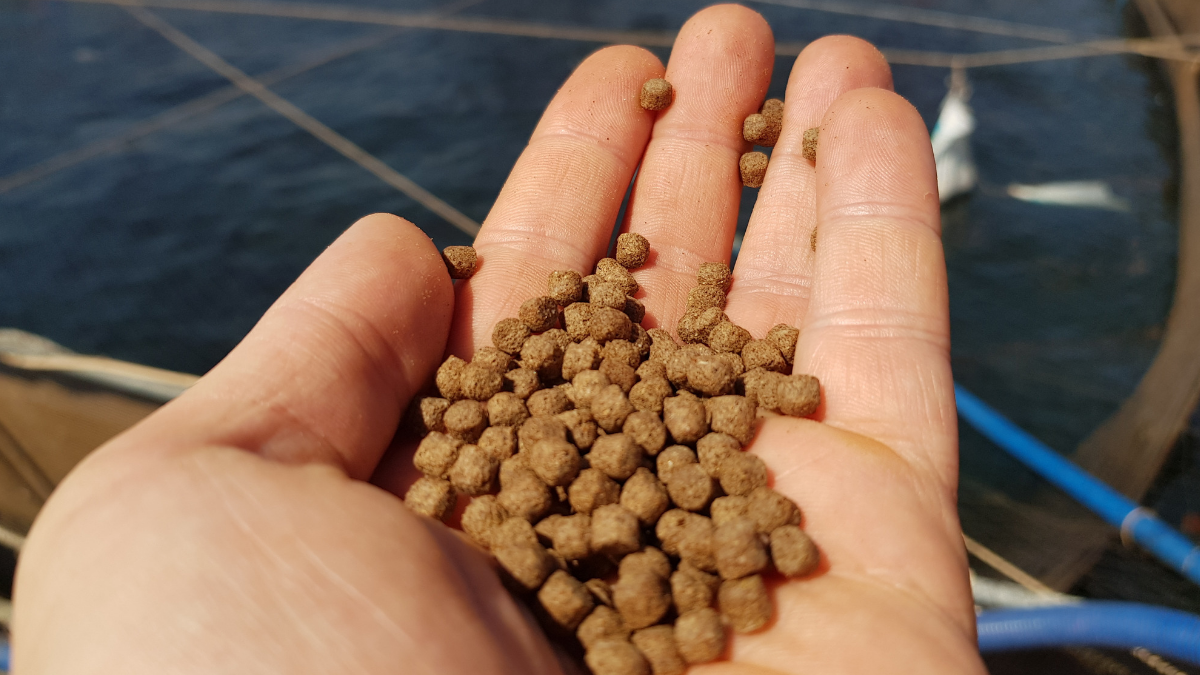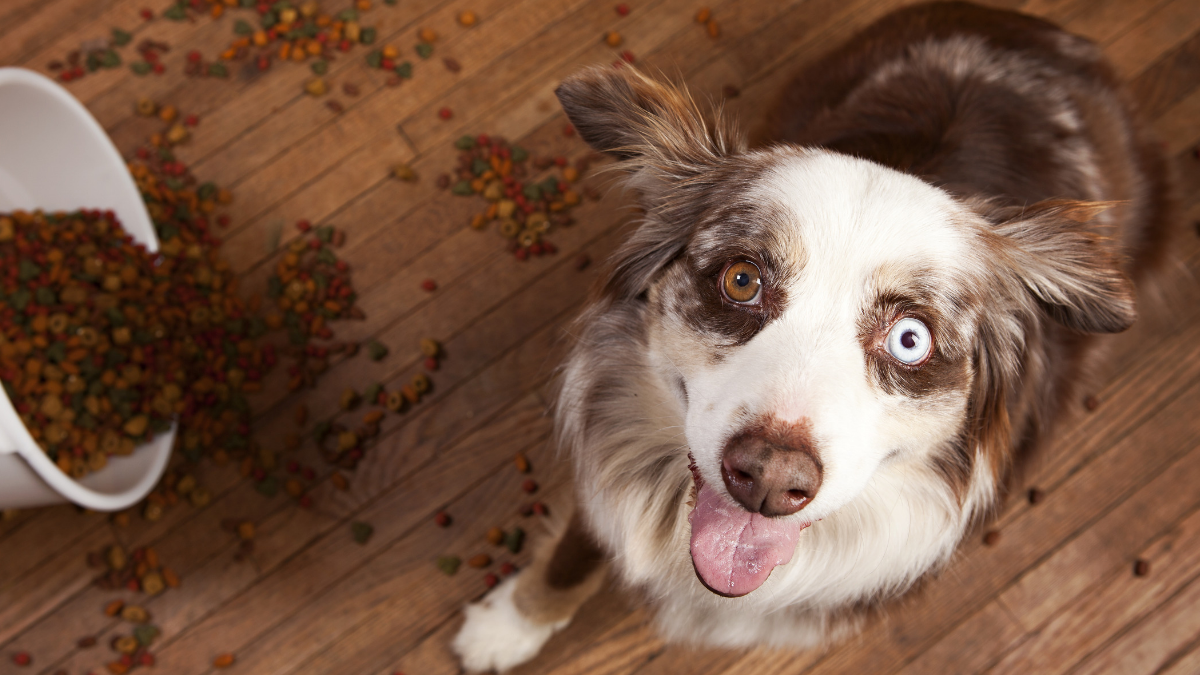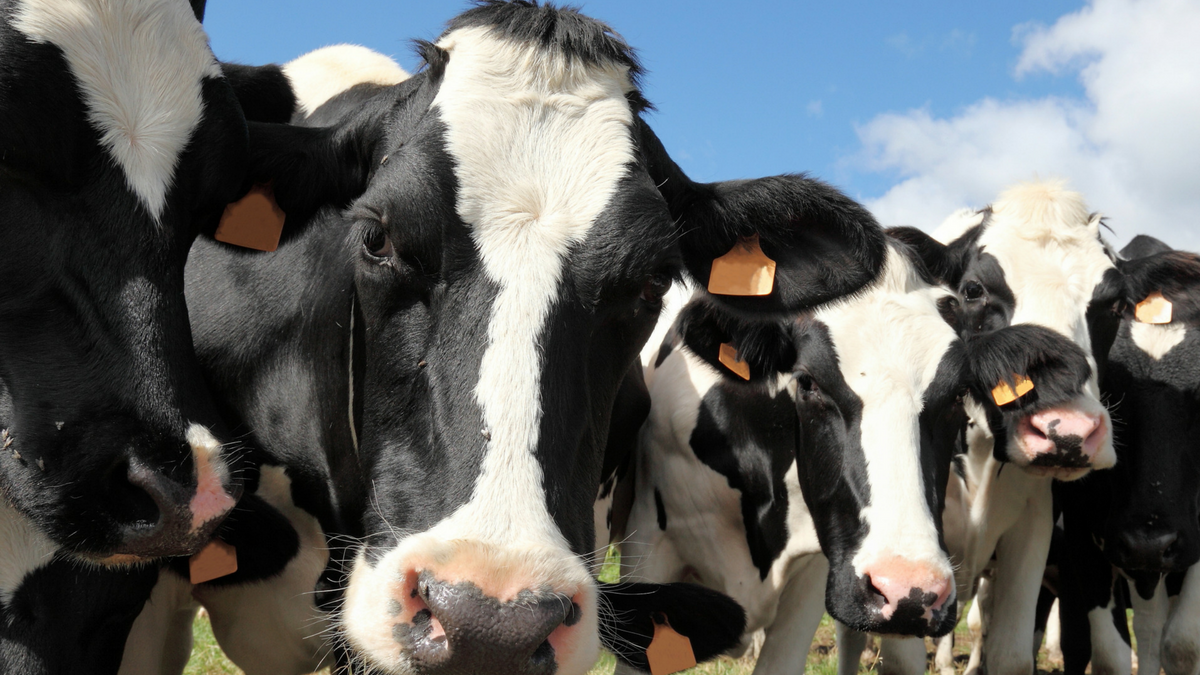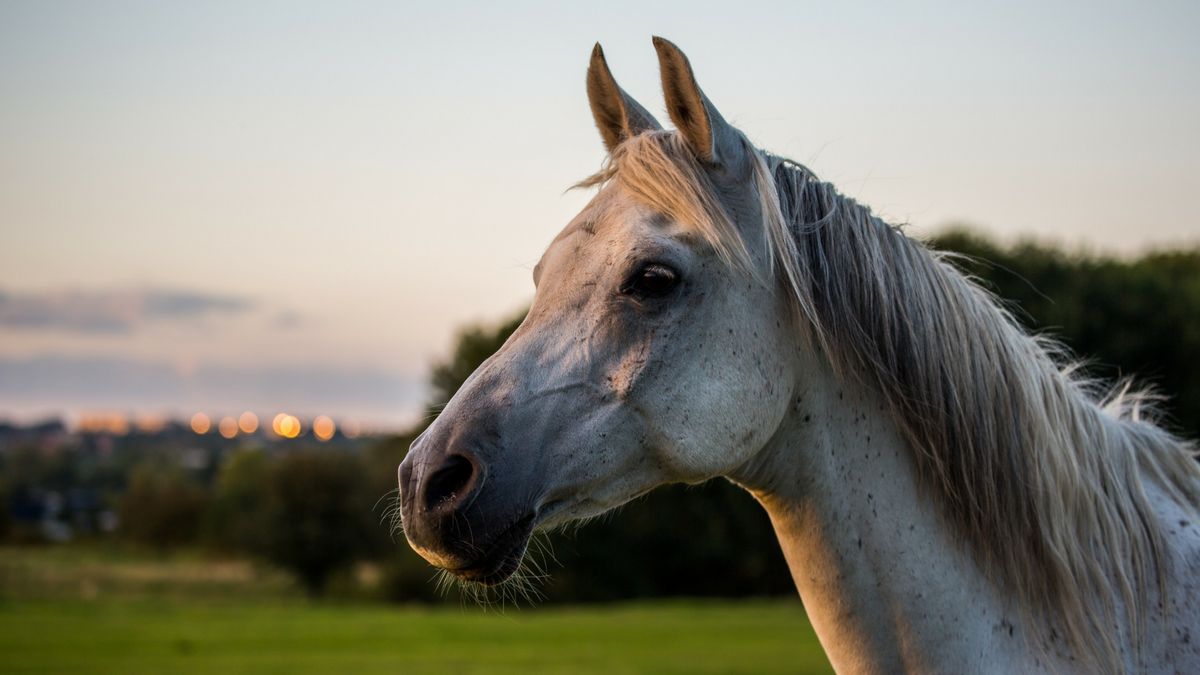Dr. Rodolphe Barrangou: The global rise of CRISPR
The following is an edited transcript of Tom Martin's interview with Dr. Rodolphe Barrangou. Click below to hear the full audio:
Tom: I'm talking with Rodolphe Barrangou, professor in the department of food, bioprocessing and nutrition sciences at North Carolina State University. Dr. Barrangou is engaged in probiotics research at the university, focusing on the evolution and functions of CRISPR-Cas System and applications in bacteria used in food manufacturing. We thank you so much for joining us.
Rodolphe: Thank you for having me.
Tom: First, if you would indulge us with a quick primer: What is CRISPR-Cas9 technology?
Rodolphe: In nature, CRISPR (short, repetitive sequences in a palindromic repeat) is the adaptive immune system in bacteria. What scientists have done is repurpose the molecular machines from this primitive immune system in bacteria and turned that into a technology used for genome editing.
Essentially, those molecular machines are equivalent to scalpels or razors that can specifically, efficiently and accurately target DNA and cut it. What happens when you cut DNA is that the endogenous DNA-repair pathways come in and repair the DNA cut. Precisely at the point of the cut of that DNA, the repair pathway will change the DNA sequence. This is why it's called genome editing: you are rewriting, you are altering, you are changing the DNA code precisely at the site of the cut, which means now you can rewrite any genome you want, any way you want.
Tom: Can this be done in real time in living organisms?
Rodolphe: This can be done across the tree of life. You can do that in primitive things like bacteria or viruses or yeast, small organisms and microorganisms, and you can do that in any type of cell in which you can deliver DNA. We can talk about crops, plants, we can talk about animals, and we can talk about mammals like humans.
Tom: Let's imagine we might want to enhance the genetic code of crops or livestock or even people. Did you snip this unwanted gene out in a crop animal or person and replace it with a good [one]? If you could walk us through how a CRISPR change is made in a living being.
Rodolphe: If you think of DNA as the book of life, you can do a [Microsoft] Word version of genetics. You can do “[control]+F” and look for any sequence you want.
Let's say there is a faulty gene that you don't like in a patient, or a trait you don't like in a particular plant or an animal. You can look for the sequence, find it and cut it. Once you cut it, you can do the edits that you want. You can remove it and take it out. You can replace it with another variant, another version, another allele.
If you think you have a typo, for example, in your genetic code, you can correct that typo to the right version, or you can actually take a word out — or take a whole sentence out, or add a word or add a sentence — which means that you don't just change [the] gene. You can take out a gene, you can add a gene. CRISPR technologies are sophisticated enough to not just alter the genetic writing but also the punctuation. You can change how loud genes are expressed; you can make them very quiet or you can make them very loud. You can change the structure of DNA as well. So, it's not just changing the letters, per se — it's changing the punctuation and the narration of that genetic code.
Tom: Can these edited genes be passed down through generations?
Rodolphe: It depends on what you edit. In humans, for example — or with animals — you can just alter cells that are in tissues and organs throughout the body that you don't pass on. Sometimes, even just a portion of the patient, or just one organ in the animal or one particular tissue type in the plant, will be altered depending on how you deliver it.
Alternatively, you can alter DNA at the embryonic stage during the reproduction process, in vivo or in vitro, and then you can change all the cells in an organism, which means that the next generation thereof will carry those changes. So, you can do either/or, or you can do both.
Tom: This is really profound. If I can walk you back a little bit in time to when you first heard about this and began to investigate it, it must have been mind-blowing.
Rodolphe: Actually, I'm one of the few people in the world who worked on CRISPR long before it was famous. My first CRISPR pattern dates all the way back to 2004, at the dark ages or the middle ages of the prehistoric era for CRISPR. At the time, people really didn't care much about what CRISPR was or how it worked or what it did in nature. That being said, in the past five years, we've seen a transformative, disruptive evolution of that technology, because the CRISPR science — again, which, in nature, is an adaptive immune system in bacteria that enables them to cut DNA or viruses and invasive sequences — has been repurposed for a different role to edit the DNA of pretty much any species or organism you can think of. This is where it all comes from.
This is where the mind-boggling "implications" come into play, because now, it's not just a cool idiosyncratic biological phenomenon, it is a very powerful technology and a very enabling technology that doesn't just enable scientists in academia to do those things, but pretty much any average-level Ph.D. geneticist across the world can tinker with the DNA of the organism they're interested in.
There are tremendous business implications, commercial implications, but also societal implications and ethical implications, with regards to how this powerful technology should or should not be used, and how it should or should not be regulated and should or should not be harnessed.
Tom: That's where I wanted to go with the conversation. Technology seems to have a way of staying way ahead of regulation. What's your guess on this: is regulation going to catch up quickly, or is the ethical debate and regulatory debate still in its infancy?
Rodolphe: It's still relatively early. Science — especially when it's disruptive and enabling and cool and powerful will outpace the progress of regulation and the engagement of productive dialogue with society, consumers, the government and with regulatory agencies. This is what I call “the highway of science.”
Essentially, as you build that highway and you develop the next frontier of the path ahead, you never start with the guardrails; you build the road first. There's no speed limit at the very edge, there are no signs, there’s no control. This is what scientists do — they are at the cutting-edge of technology. You have to trust that the regulations, agencies and governments are doing their jobs and their due diligence.
There's a little bit of a delay between the time you build the road and when you can open it up to the public, but those guardrails do come up. They are being built for CRISPR. They have been expended upon a foundation of genetic engineering and gene modification that has existed since the 70s.
There are a lot of people currently at the table who are engaging in a wise, patient, careful, mindful — but also, perhaps, passionate — debate about what we should or shouldn't do. I think this is one of those cases where there is so much at stake that you have to be patient and make sure that you don't rush in to make too quick of a decision — or put too big a guardrail, speed bump or speed limit. That you mindfully assess the various applications of CRISPR — whether they're in humans for therapeutics, ag to feed the world or animals for next-generation breeding. There are different implications for different industries and different groups of stakeholders.
Tom: Let's bring it around to ag feeding the world. Not only is the population expanding exponentially, so are the middle classes of many developing countries out there. That implies steadily increasing consumer demand for food products. Because of that, it's estimated that farmers will need to grow a lot more food on the same amount of land and with increasingly limited water resources to feed everyone. How might CRISPR become part of the solution to all that?
Rodolphe: I would argue that the food gap lying ahead of us is tremendous and very challenging. We cannot keep increasing the yields or the quality or the sustainability of our food supply at the rate we're doing it right now, because the population is increasing faster, and we can address that increasing demand. As you mentioned, people spend an increasing amount of their expendable income in foods, notably protein sources and healthier food. This is where plants come in.
We are in a day and age where challenges with regards to the amount of arable land is not increasing; if anything, it's decreasing, to some extent. Water supply is ever-increasingly challenging. The forecasts over the next couple of decades look very dire and concerning. Enter CRISPR to the rescue, to some extent, and we now have a technology that will enable us to accelerate and improve the ease and speed with which we can generate and breed those next-generation crops and animals to have not just better yields but also better health, better traits, better sustainability, and make responsible and efficient use of our water supply and our soil as well.
Tom: What about public perceptions? As recently as 2016, there was a survey by Pew Research that found 39 percent of US adults believe foods made from GMO crops, as distinguished from CRISPR-influenced crops, are not as healthy as conventional versions. Even if CRISPR technology is shown to be capable of saving the planet from starvation, do you think the public will come around to accepting it?
Rodolphe: To me, the science part has become the easy part. It used to be very difficult to do those scientific advancements and technology development and democratizing them. CRISPR has shown to be a very convenient — not very cumbersome — very powerful technology. The science is not the bottleneck anymore. We live in an age where consumers are concerned more and more about their health, about their food, about food safety and food security, where it comes from, what it consists of and what it can do for their health or not. How can we enable them to be healthier, or how we will tip the balance toward a less copacetic medical condition?
We are in an age where, sadly enough, much of the general public doesn't have the education and intimacy they need to truly understand big science and deep science. When we talk about genetics, when we talk about genomics, when we talk about engineering and editing, DNA cutting and DNA repair, there are many ways to harness those technologies — to repurpose the natural ability of some of those organisms to correct their DNA sequences and change them in natural ways.We're not talking about transgenics, we're not talking about GMOs, we're not talking about “Frankenfood.” We're talking about harnessing nature's power to change DNA, sometimes back to what it is in nature, to a very desirable, broadly-distributed, bio-diverse version. It's hard to explain. It's hard to showcase. It's hard to disseminate. It's hard to communicate.
I think the challenge moving ahead for a lot of the breeders — whether you breed plants, whether you breed microbes and engineer them and develop them and alter them, or whether you breed animals — is, really, to explain to society how the science works, how the technology functions and, then, showcase the benefits that it provides, not just from a financial standpoint but from a sustainability standpoint. The ag world in general, and the plant world in particular, suffer from this lack of trust. There's a perceived lack of transparency. There are concerns from society about stewardship.
Being a scientist, working at a state institution — a land-grant university — part of my role is to educate the public and carry out the mission of a land-grant institution that wants to feed the world and make people healthier and better, make food more available, more sustainable. Science is there to create solutions more so than to create problems. The difficulty is not just to create products and deliver them, but to illustrate that we have all those benefits from yield, pest management and water and land usage. Resource allocations are such that we will — it's a question of “when,” not “if”— be able to use those technologies to feed the world, and not just feed the people who can afford it, but perhaps feed the people who need it the most and are in the most dire situation, with regards to their food supply.
Tom: The U.S. Department of Agriculture (USDA) recently officially announced that certain gene-edited plants can be designed, cultivated and sold free from regulation, that as long as a genetic alteration could have naturally been bred in a plant, it won't be regulated. If you want to add in genes from distant species, you still have to jump through hoops. What sorts of applications of CRISPR technology do you envision as a result of that USDA decision?
Rodolphe: I think the decision made and communicated by the USDA, especially our Secretary of Agriculture, Sonny Perdue, is fantastic. It is very momentous. It is very enabling. It is a good illustration of how science-based decisions can occur with regulatory agencies. Globally, I quite look forward to other regulatory agencies across the planet embracing this kind of approach and condoning this kind of decision. I think in terms of closing the food gap, one underappreciated, easy solution is preventing food waste — food spoilage.
There are great examples already published of how we can use CRISPR to alter, for example, browning in mushrooms. If you think of the white button mushroom, left in the open air for too long, this very attractive whiteness in the visual appeal of the mushroom will go away and be replaced with brown. It doesn’t look as appetizing. It doesn’t look as compelling. It doesn’t look as tasty. People will throw away their food. Up to about 30 percent of all the food produced is wasted at the consumer level. People buy it, people spend money on it, people have it in their fridge, and they don't consume it for a variety of reasons.
Again, CRISPR to the rescue! We can go into the gene responsible for browning and let nature change the sequence to "knock it out" and prevent browning in mushrooms, essentially extending the visual appeal of produce for the consumer that already bought it. You can think of doing the same in apples. A browning apple is perfectly tasty, maybe a little sweeter and better. Rather than put it in a pie, you can keep it out in the open. You can cut it and slice it and still prevent browning. The chance that somebody is going to consume it is higher when you do that.
There are hundreds of those examples where you think of browning lettuce and others like this, whereby we can alter, naturally, some of the genetic contents of those plant species to extend their shelf life and their consumption.
Tom: What's happening in the CRISPR “industry,” if you will, or at least in the research side of CRISPR, in recent years, even in recent months? Has it been taking off exponentially?
Rodolphe: The rise and the unleashing of the CRISPR craze, quantitatively, is unbelievable. In terms of cost and use, you can get a CRISPR construct for $65 from not-for-profit organizations like Addgene and have it shipped to you overnight. It is very accessible and is very affordable. The number of scientists who are now part of the CRISPR community has grown exponentially in the last few years. Again, organizations like Addgene have been able to ship CRISPR material and now have CRISPR biological and genetic contracts in the hundreds of thousands.
Tom: Wow.
Rodolphe: So, we have hundreds of thousands of labs around the world and scientists around the world that have that tool in their hand. They're very creative, they're very productive, they're very passionate; they're very excited about the potential uses and applications of that technology. At the same time, our understanding scientifically of CRISPR is, likewise, increasing exponentially. Within a decade, we went from a literature that was only a couple dozen articles to a paper published every month, to a paper published every week — now, to ten papers published every day.
Our understanding of the technology and our enhancement of that technology — which is still only five years old, in its infancy — is moving along at a scientific pace that is unprecedented. At the same time, this CRISPR craze is being fueled by wise, veteran and deep-pocketed investors who are investing in that technology and literally putting hundreds of millions of dollars into this revolutionary technology. We've seen public IPOs (initial public offerings) of CRISPR companies whose very purpose is to use the technology to cure disease. We're now seeing the second generation of CRISPR companies more in the ag space coming in to breed plants and breed animals. I think this is just the beginning.
Tom: How long before we'll be eating CRISPR produce?
Rodolphe: CRISPR is already present in about half the bacteria in the world. We already eat CRISPR on a regular basis. If you eat cheese, if you eat yogurt, if you eat fermented foods, CRISPR-Cas systems already inhabit your gut. They're also in the bacteria that inhabit our skin and vigorous epithelia in our environment. So, they're in our food, they're in our body, they're all around. We already have a lot of industrial applications — notably, in the dairy industry — where fermented yogurt and fermented cheese have been manufactured using CRISPR, enhanced in natural ways with starter cultures that turn and ferment milk into yogurt or cheese.
I mentioned the white button mushroom. There's also waxy corn and dozens of other produce species that have already been altered in the lab using CRISPR technologies and are awaiting global green lights across the world to be commercialized. Now that we have the USDA's condoning of certain uses of CRISPR technologies and certain crops, in very short order, we'll do that.
Now, we live in a world where biohackers have access to those things as well. We know people are doing CRISPR kale and CRISPR lettuce — “hipster” food that is genetically altered. It's not a question of if or, really, a question of when; it's how quickly this will take over our food supply chain.
Tom: Let's bring this over to the human side just for a second. One of the most exciting things I've heard of was at TED 2018 in Vancouver. Luhan Yang, a chief scientific officer at eGenesis, said that scientists using CRISPR to edit pig organs so they'll be accepted by humans think a breakthrough is coming that will end the organ donation waiting list, which is profound! Do you share her assessment?
Rodolphe: Absolutely. First of all, she's fantastic. She's a very smart, very driven and motivated — not just a scientist, but a CEO of a powerful company now. She's been advised by the great George Church. She's putting that technology to good use, literally humanizing pigs to be able to grow human tissue. She’s on a quest to put an end to the organ donor list shortcomings, delays and loss of life. It’s a tremendous opportunity to alleviate pain and suffering, and to correct diseases in a very diversified group of patients that are afflicted by a number of different diseases that are problematic and life-threatening.
Again, they are moving at a pace that is mind-boggling. I would say they're more than halfway to achieving their goal in a very short amount of time. They're well-equipped, they're well-funded, they are driven, and they have all the ingredients you need to be successful. I think the scientific hurdles are coming down one at a time. The question will be how regulators will manage this. How will the FDA manage that? How ready or equipped are they or not, today, to do it? And then, eventually, will the consumers and patients accept it? If we've learned anything from the history of medicine, it is that, when it comes to life or death, when it comes to curing diseases, patients faced with death will make the call. We have these adult medical consent forms. If you ask for things to be done to you, and your alternative is not being here anymore, I would predict that the patients will embrace those technologies when the time comes.
Tom: Dr. Rodolphe Barrangou, a professor in the department of food, bioprocessing, and nutrition Sciences at North Carolina State University.
Rodolphe: Thank you.
Dr. Rodolphe Barrangou appeared on the power-packed mainstage of ONE: The Alltech Ideas Conference (ONE18).
Sign up for free access to watch his presentation and more by clicking below:

About 30 percent of all produce is thrown away before it's consumed, compounding the problem of feeding a rising population. Dr. Rodolphe Barrangou uses apples as an example of food that could be modified using CRISPR technology to reduce browning and extend their shelf life.













